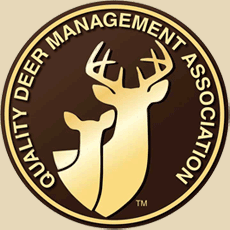A few decades ago when I began my foray into the outdoors, I did not have a mentor to show me the ropes. My dad had little to no interest in the outdoors that did not involve a little white ball he chased around. My interest were not the same and I found every waking moment following the footsteps of Daniel Boone and Jim Bridger. Everything I could read by famous authors of the outdoors captivated my mind and imagination.
As I plodded through the midlands of South Carolina with a Sears and Roebuck .22 rifle I began to discover and learn. My mind was a sponge trying to soak up all knowledge I could. Then I discovered Outdoor life book club. For a hefty sum of $1.00 I could get ten books on animals of North America. All I had to do was agree to purchase two more books in a year’s time. That was easy enough for a young teenager with money burning a hole in my pocket. These ten books shaped my knowledge of the outdoors more than anything else. I would carry “Tracking animals” with me into the woods and compare the drawings of tracks with the ones I was finding. I would read about small game hunting and how squirrels moved about.
I read about quail, pheasants, rabbits, whitetail deer, Moose, and everything that walked. Before long I was beginning to understand what the woods was telling me. Then a friend introduced me to trapping, and now my learning curve exploded. I began to learn to tell the difference between a deer trail, raccoon trail, general game trail. I noticed little subtleties of things I had not noticed before and within a few years, some things began to become more apparent in how animals moved through the woods. It became more and more obvious that animals don’t just meander through the forest. They move with a purpose. This purpose is driven by some key factors. Food, shelter and topography. The last being the most important. Animals, – almost all animals, but especially large mammals’ move through the forest with a specific purpose. They will not amble aimlessly, on the contrary, they move from A to B specifically. Some reasons may be taught by their mother and they do not understand why at young ages. But in time they understand that the reason to get from here to there is because of safety, and ease of travel. Nothing, impacts the movement of deer in general and bucks in particular more than topography and safety. In that order. One is not chosen without considering the other.
It has been said for decades that bucks walk below the top of the ridge to avoid being silhouetted. This is true, but a lot of times it is also because it is easier to walk around a hill than to walk over it. Bucks skirt the peak to keep from walking directly up the peak. Can they walk over the peak? Of course, spook one and you will see how quickly they can disappear over the peak. But when moving from one place to another, they will always choose the path of least resistance.
When we spend time in the woods we begin to see patterns of how the animals move through the woods. Edges are common areas to look for movement. So too are along creeks, funnels, saddles, and along roadways. Regardless of how flat the terrain seems to us, to the deer there are subtle differences they use to their advantage. Bucks will seldom not use a saddle to get from one place to another. Saddles may be a few yards long to half a mile long, but the bucks will move through the shallowest point when crossing a saddle.
If creeks are too wide to jump across, they will never cross in fast running water if there is a shallow slow moving area close by. If the bottom is slick rocks, they will parallel the creek until there is a sandbar they can use to get across. Creek crossings are great places to set up trail cameras, because they are generational. Does teach fawns where the best places to cross are and this knowledge is passed down from one generation to the next.
Reading about – reading sign is important, but nothing beats boot leather in the woods. Studying and studying the topography, locate rubs, scrapes and trails. Identify beds and trails coming into and out of bedding areas. Look through all topography maps of your property and learn where the saddles are, where are the funnels?
This time of year is the best time to learn the movements of deer across your property. By learning how they move across the property the better you’ll understand your deer herd and why and how they move. Knowing this will put more bucks in your sights this season.




